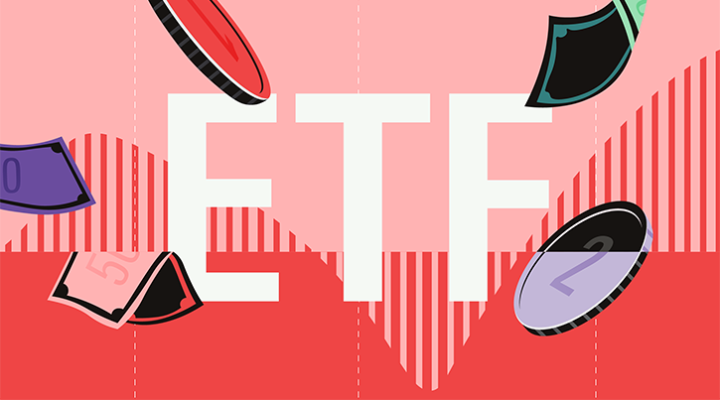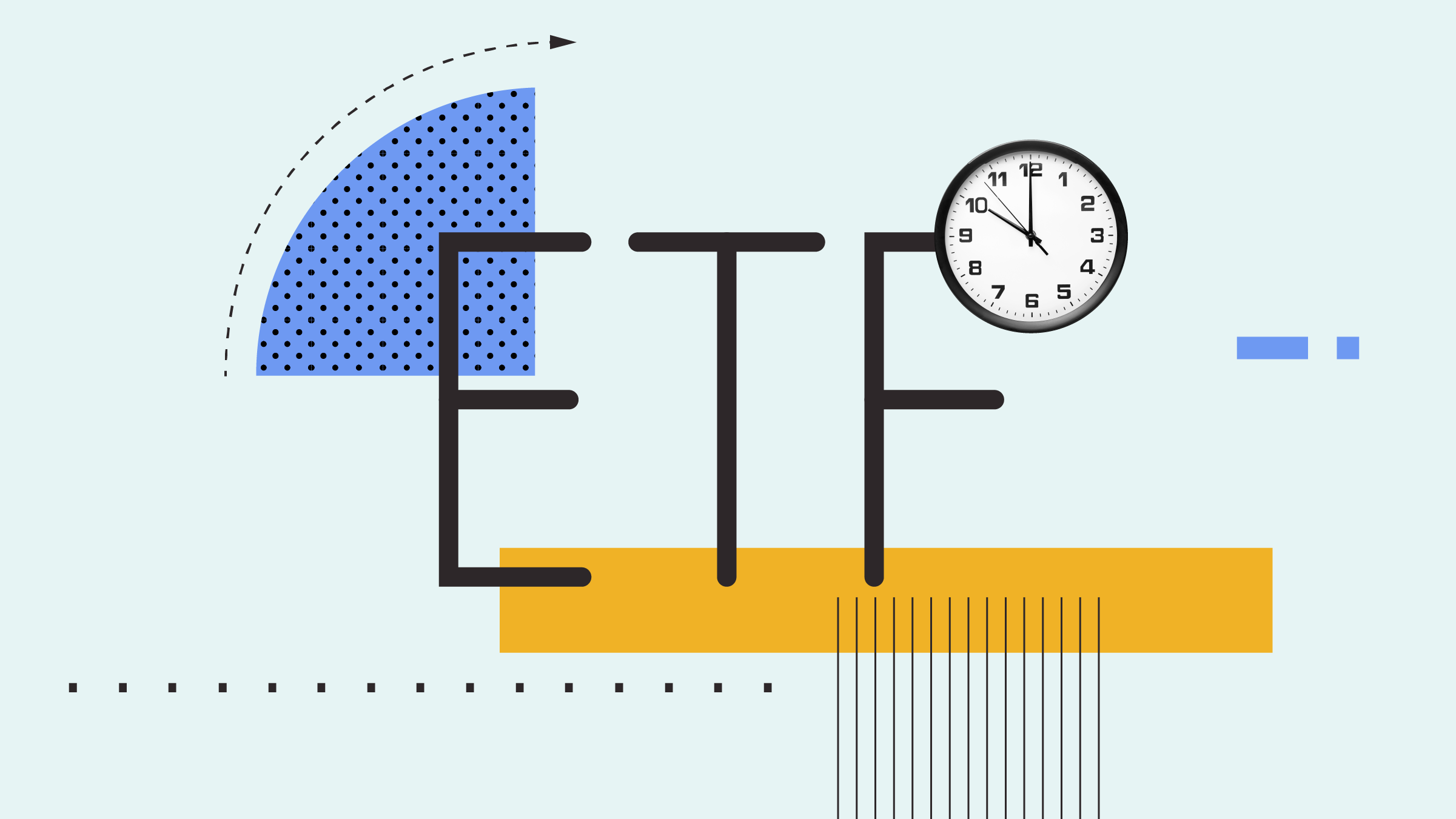
Exchange-traded funds, or ETFs, are often low-cost instruments for investors to track popular indexes or leverage experienced manager choices in an attempt to beat the market. The best ones serve as building blocks for a portfolio, and unlike open-end mutual funds, all ETFs are traded throughout the day on an exchange.
In the first quarter of 2025, the worst performers included VanEck Crypto & Blockchain Innovators DAPP and Global X Blockchain BKCH. Data in this article is sourced from Morningstar Direct.
To read about the best-performing ETFs, check out our other story.
Screening for the Worst-Performing ETFs
To find the quarter’s worst-performing ETFs, we screened those in Morningstar’s equity, allocation, or fixed-income categories that are available in the UK. We excluded exchange-traded notes, known as ETNs, and ETFs with less than $25 million (£19.3 million) in total assets. We also excluded funds that fall into Morningstar’s “trading” categories, as these funds are designed for active traders and are not suitable for long-term investors.
Among the worst-performing ETFs, seven were from the equity technology category, where funds fell 10.78% in the first quarter.
The 10 Worst-Performing ETFs for Q1 2025
1. VanEck Crypto & Blockchain Innovators UCITS ETF DAPP
2. Global X Blockchain UCITS ETF BKCH
3. iShares Blockchain Technology UCITS ETF BLKC
4. WisdomTree Blockchain UCITS ETF WBLK
5. Sprott Uranium Miners UCITS ETF Accumulating URNM
6. WisdomTree Artificial Intelligence UCITS ETF WTAI
7. Amundi MSCI Semiconductors UCITS ETF CHIP
8. Global X Uranium UCITS ETF URNU
9. VanEck Uranium and Nuclear Technologies UCITS ETF NUCL
10. First Trust Cloud Computing UCITS ETF SKYU
Worst-Performing ETFs Available in the UK
Source: Morningstar Direct. Data as of March 31, 2025.
Metrics for the Worst-Performing ETFs
VanEck Crypto & Blockchain Innovators UCITS ETF
• Morningstar Rating: 1 star
• Expense Ratio: 0.65%
• Morningstar Category: Equity Technology
The worst-performing ETF in the first quarter was the £203 million VanEck Crypto & Blockchain Innovators, which lost 39.34%. The passively managed VanEck ETF fell further than the average 10.78% loss on funds in the equity technology category in the first quarter. Over the past 12 months, VanEck Crypto & Blockchain Innovators fell 21.56%, placing it in the 98th percentile within its category and falling further than the 0.35% loss on the average fund.
The VanEck Crypto & Blockchain Innovators UCITS ETF, launched in April 2021, has a Morningstar Medalist Rating of Bronze.
Global X Blockchain UCITS ETF
• Morningstar Rating: 1 star
• Expense Ratio: 0.50%
• Morningstar Category: Equity Technology
With a 37.65% loss, the £21 million Global X Blockchain was the second-worst performing ETF on our list for the first quarter. The passively managed Global X ETF fell further than the average 10.78% loss on funds in the equity technology category. Over the past year, Global X Blockchain lost 32.48%, placing it in the 100th percentile within its category and falling further than the 0.35% loss on the average fund.
The Neutral-rated Global X Blockchain UCITS ETF was launched in January 2022.
iShares Blockchain Technology UCITS ETF
• Morningstar Rating: N/A
• Expense Ratio: 0.49%
• Morningstar Category: Equity Technology
The third-worst performing ETF in the first quarter was the £73 million iShares Blockchain Technology, which fell 30.92%. The iShares ETF, which is passively managed, fell further than the average 10.78% loss on funds in the equity technology category. Over the past 12 months, the ETF fell 22.41% to place in the 99th percentile within its category, falling further than the category’s average loss of 0.35%.
The iShares Blockchain Technology UCITS ETF has a Morningstar Medalist Rating of Bronze. It was launched in September 2022.
WisdomTree Blockchain UCITS ETF
• Morningstar Rating: N/A
• Expense Ratio: 0.45%
• Morningstar Category: Equity Technology
The £23 million WisdomTree Blockchain was the fourth-worst performing ETF in the first quarter, with a loss of 25.80%. The passively managed WisdomTree ETF performed worse than the average 10.78% loss on funds in the equity technology category. Over the past year, the ETF dropped 9.00% to land in the 79th percentile within its category, dropping further than the category’s average one-year loss of 0.35%.
The Bronze-rated WisdomTree Blockchain UCITS ETF was launched in September 2022.
Sprott Uranium Miners UCITS ETF Accumulating
• Morningstar Rating: N/A
• Expense Ratio: 0.85%
• Morningstar Category: Equity Natural Resources
Fifth-worst was the £132 million Sprott Uranium Miners, which lost 21.77% in the first quarter. The passively managed HANetf ETF fell short of the average 1.29% return on funds in the equity natural resources category. Over the past 12 months, Sprott Uranium Miners fell 33.50%, finishing in the 98th percentile within its category. It dropped further than the category’s average loss of 4.67%.
The Sprott Uranium Miners UCITS ETF has a Morningstar Medalist Rating of Bronze. It was launched in May 2022.
WisdomTree Artificial Intelligence UCITS ETF
• Morningstar Rating: 3 stars
• Expense Ratio: 0.40%
• Morningstar Category: Equity Technology
The sixth-worst performing ETF in the first quarter was the £532 million WisdomTree Artificial Intelligence, which lost 18.98%. The passively managed WisdomTree ETF fell further than the average 10.78% loss on funds in the equity technology category. Over the past year, WisdomTree Artificial Intelligence fell 12.85%, placing it in the 88th percentile within its category and falling further than the 0.35% loss on the average fund.
The WisdomTree Artificial Intelligence UCITS ETF has a Morningstar Medalist Rating of Bronze. It was launched in November 2018.
Amundi MSCI Semiconductors UCITS ETF
• Morningstar Rating: 5 stars
• Expense Ratio: 0.35%
• Morningstar Category: Equity Technology
With an 18.34% loss, the £478 million Amundi MSCI Semiconductors UCITS ETF was the seventh-worst performing ETF on our list for the first quarter. The passively managed Amundi ETF fell further than the average 10.78% loss on funds in the equity technology category. Over the past 12 months, the Amundi MSCI Semiconductors UCITS ETF lost 3.80%, placing it in the 61st percentile within its category and putting it down further than the 0.35% loss on the average fund.
The Amundi MSCI Semiconductors UCITS ETF takes environmental, social, and governance criteria into consideration. This fund has a Morningstar Medalist Rating of Bronze.
Global X Uranium UCITS ETF
• Morningstar Rating: N/A
• Expense Ratio: 0.70%
• Morningstar Category: Equity Natural Resources
The eighth-worst performing ETF in the first quarter was the £131 million Global X Uranium, which fell 17.50%. The Global X ETF, which is passively managed, underperformed the average 1.29% gain on funds in the equity natural resources category. Over the past year, the ETF fell 20.89% to place in the 92nd percentile within its category, dropping further than the average one-year loss of 4.67%.
The Global X Uranium UCITS ETF, launched in April 2022, has a Morningstar Medalist Rating of Neutral.
VanEck Uranium and Nuclear Technologies UCITS ETF
• Morningstar Rating: N/A
• Expense Ratio: 0.55%
• Morningstar Category: Equity Natural Resources
The £305 million VanEck Uranium and Nuclear Technologies was the ninth-worst performing ETF in the first quarter, with a decline of 16.99%. The passively managed VanEck ETF performed worse than the average 1.29% gain on funds in the equity natural resources category. Over the past 12 months, the ETF dropped 6.94% to land in the 63rd percentile, falling further than the category’s average loss of 4.67%.
The VanEck Uranium and Nuclear Technologies UCITS ETF has a Morningstar Medalist Rating of Bronze. It was launched in February 2023.
First Trust Cloud Computing UCITS ETF
• Morningstar Rating: 3 stars
• Expense Ratio: 0.60%
• Morningstar Category: Equity Technology
Tenth-worst was the £288 million First Trust Cloud Computing, which lost 16.70% in the first quarter. The passively managed First Trust ETF fell further than the average 10.78% loss on funds in the equity technology category for the quarter. Over the past year, First Trust Cloud Computing rose 4.51%, finishing the 12-month period in the 24th percentile within the equity technology category. It outperformed the category’s average one-year loss of 0.35%.
The Bronze-rated First Trust Cloud Computing UCITS ETF was launched in December 2018.
What Are ETFs?
Exchange-traded funds are investments that trade throughout the day on stock exchanges, much like individual stocks. They differ from traditional mutual funds—known as open-end funds—which can only be bought or sold at a single price each day. Historically, ETFs have tracked indexes, but in recent years, more ETFs have been actively managed. ETFs cover a range of asset classes, including stocks, bonds, commodities, and most recently cryptocurrency.
ETFs: More Ideas to Consider
Investors who would like to find more ETF investment ideas can do the following:
• Read the latest articles on ETFs.
• Use the ETF screener to find the best ETFs according to your specific criteria. You can search for funds based on their fees, Morningstar Medalist Ratings, manager tenures, and more.
• Compare funds and ETFs side by side and easily follow their valuations, ratings, and fees.
This article was compiled by Bella Albrecht, edited by Lauren Solberg, and reviewed by Sunniva Kolostyak.
This article was generated with the help of automation and reviewed by Morningstar editors. Learn more about Morningstar’s use of automation.
The author or authors do not own shares in any securities mentioned in this article. Find out about Morningstar's editorial policies.
























